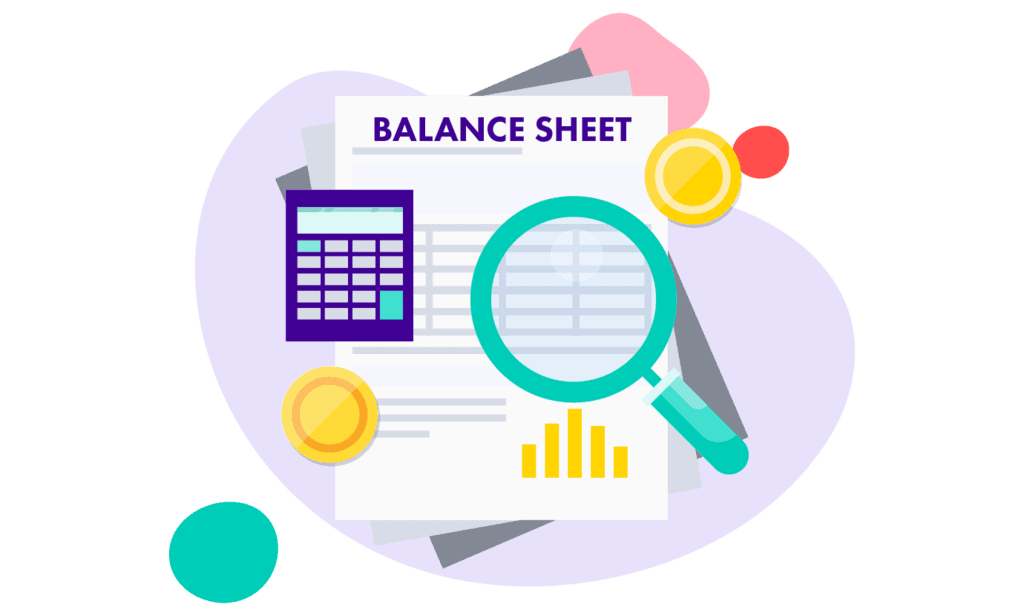The Balance Sheet is a financial statement that lists a company’s assets, liabilities, and equity. The fundamental equation that governs the Balance Sheet is:
Assets = Liabilities + Equity
This equation ensures that the company’s resources (assets) are financed by either borrowing (liabilities) or owners’ investment (equity).
Components of a Balance Sheet
Assets
Assets are resources owned by the company that have economic value. They are categorized as:- Current Assets: Assets that are expected to be converted into cash or consumed within one year.
- Examples: Cash, accounts receivable, inventory, prepaid expenses.
- Non-Current Assets: Assets that provide value over a long period (more than one year).
- Examples: Property, plant, and equipment (PP&E), intangible assets, long-term investments.
- Current Assets: Assets that are expected to be converted into cash or consumed within one year.
Liabilities
Liabilities are obligations that the company owes to others. They are categorized as:- Current Liabilities: Obligations due within one year.
- Examples: Accounts payable, short-term loans, accrued expenses.
- Non-Current Liabilities: Obligations due after one year.
- Examples: Long-term loans, bonds payable, deferred tax liabilities.
- Current Liabilities: Obligations due within one year.
Equity
Equity represents the owners’ claim on the company’s assets after all liabilities have been paid off. It includes:- Common Stock: Investment by shareholders.
- Retained Earnings: Profits retained in the business for growth.
Format of a Balance Sheet
A standard Balance Sheet is presented in either of two formats:
1. Account Format
Assets are listed on the left-hand side, while liabilities and equity are on the right-hand side.
2. Report Format
Assets are listed first, followed by liabilities and equity, in a vertical format.
Example:
XYZ Ltd.’s Balance Sheet as of 31st March 2024
| Assets | Amount (₹) | Liabilities and Equity | Amount (₹) |
|---|---|---|---|
| Current Assets | Current Liabilities | ||
| – Cash | 1,00,000 | – Accounts Payable | 50,000 |
| – Accounts Receivable | 2,00,000 | – Short-Term Loan | 30,000 |
| – Inventory | 1,50,000 | ||
| Non-Current Assets | Non-Current Liabilities | ||
| – PP&E | 5,00,000 | – Long-Term Loan | 3,00,000 |
| – Intangible Assets | 50,000 | ||
| Equity | – Common Stock | 3,00,000 | |
| – Retained Earnings | 3,20,000 | ||
| Total Assets | 10,00,000 | Total Liabilities & Equity | 10,00,000 |
Importance of a Balance Sheet
- Financial Position: Provides a clear picture of a company’s financial standing.
- Liquidity Analysis: Helps assess the company’s ability to meet short-term obligations.
- Solvency: Indicates the company’s ability to meet long-term obligations.
- Performance Assessment: Enables stakeholders to evaluate the company’s financial stability and growth potential.
- Decision-Making: Essential for investors, creditors, and management to make informed decisions.
Examples of Real-Life Applications
Small Business Example
A bakery has the following Balance Sheet components:
- Assets: ₹2,00,000 in equipment, ₹50,000 in inventory, and ₹20,000 in cash.
- Liabilities: ₹1,00,000 in loans and ₹10,000 in accounts payable.
- Equity: ₹1,60,000 (₹2,70,000 – ₹1,10,000).
This Balance Sheet shows the owner the bakery’s financial position, helping them decide whether to invest in more equipment or expand operations.
Corporate Example
Apple Inc.’s Balance Sheet includes:
- Assets: Billions in cash reserves and intellectual property.
- Liabilities: Outstanding loans and payables.
- Equity: Significant retained earnings reflecting the company’s profitability over time.
How to Prepare a Balance Sheet
- List All Assets: Categorize them as current and non-current.
- List All Liabilities: Separate into current and non-current.
- Calculate Equity: Include common stock and retained earnings.
- Verify the Equation: Ensure that Assets = Liabilities + Equity.
Conclusion
The Balance Sheet is a vital tool in financial accounting that provides insights into a company’s financial stability. Whether you’re a business owner, accountant, or investor, mastering the Balance Sheet helps in making sound financial decisions.
At Commands Global, we offer in-depth courses on Financial Accounting, including practical training on preparing and analyzing Balance Sheets.
📘 Learn Financial Accounting Today!
Visit www.commandsglobal.com and start your journey to mastering accounting fundamentals!

